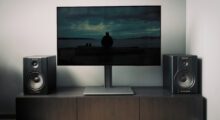Authors — Devan Scott
-
Did You See (and Hear) That? Why Home Viewing Can Be Dark and Inaudible

If the most frequently used pejoratives for contemporary films—“dim,” “muddy,” “inaudible”—are to be believed, we’ve entered a literal dark age of cinema, with cinematographic and sonic tools pushing filmmakers to ever-greater depths of audiovisual obscurity. For more than a decade, Christopher Nolan has incurred the wrath of audiences who prefer their dialogue clearly audible.1 Five years ago, the Game of Thrones episode “The Long Night” propelled the topic of the visual “New Darkness” into mainstream discourse. That this seemingly unsustainable state of affairs has persisted for as long as it has is, to many outside observers, perplexing. Why haven’t we […]
by Devan Scott on Mar 18, 2024 -
The “Film Look” and How The Holdovers Achieved It

A working digital colorist or cinematographer in 2024 is likely all too familiar with one particular question: “Can we get the ‘film look’?” A decade into the age of digital sensors as the increasingly dominant and default shooting format, filmmakers at all budget levels are increasingly looking back at celluloid for inspiration. Phenomena once seen as drawbacks to be minimized—grain, chromatic aberration, anamorphic distortion, lens flares, halation—have not only become desired, but, if hordes of YouTube camera gurus are to be believed, “cinematic.” That is, these elements associated with this particular image formation workflow are essential to what constitutes “cinema,” […]
by Devan Scott on Jan 31, 2024
